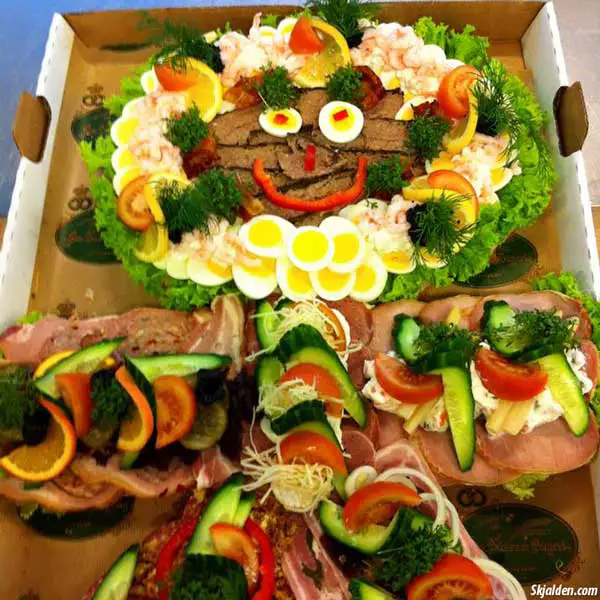When you’re in Denmark and a birthday rolls around, you’re very likely to see something quite special at the party: a Kagemand or Kagekone directly translating to “Cake Man” and “Cake Woman. These aren’t just any birthday cakes. They’re custom-made to look like a man or a woman and decorated with all sorts of sweet treats, making the birthday celebration a bit more fun and personalized.
The idea is simple yet creative: a cake that doubles as a centerpiece and a conversation starter, covered in colorful icing, sweets, and sometimes even licorice for hair. Whether made from flaky Danish pastry, soft choux, or the gooey, caramel-topped Brunsviger, these unique Danish birthday cakes bring a fun twist to birthday parties.
This playful tradition has roots within the Danish culture, blending the love of good food with a flair for celebration. It’s not just for kids. Adults, too, often bring a Kagemand or Kagekone to the office to share with colleagues, making birthdays a collective celebration rather than a private affair. This is part of the Danish approach to work-life balance and community.
The Legacy of Danish Bakers
Looking back, the tradition owes much to the creativity and craftsmanship of Danish bakers. One of the early champions was a Copenhagen-based baker named Jens Olsen, whose late 19th-century bakery became a local legend for its innovative and high-quality pastries.
Olsen was one of the first to popularize the Kagemand and Kagekone, turning them into an art form that delighted customers and set a high bar for future bakers.
In Odense, another baker, Anna Svendsen, made her mark in the early 20th century by pushing the boundaries of cake decoration. Her bakery was famed for its exquisite Kagemand and Kagekone, adorned with intricate icing work and imaginative designs that made each cake a masterpiece.
Svendsen’s approach not only elevated the cakes’ aesthetic appeal but also highlighted the potential for these treats to be tailored to individual tastes and themes, a practice that continues to this day.
Today’s Kagemand and Kagekone: A Blend of Tradition and Innovation
Modern Danish bakers have inherited this legacy of innovation and personalization, continually finding new ways to surprise and delight with their Kagemand and Kagekone creations. While the basic concept remains the same, today’s versions might feature anything from superhero motifs to elaborate floral designs, reflecting the birthday person’s interests or the party’s theme.
The popularity of Kagemand and Kagekone is a symbol of the Danish love of tradition, community, and, of course, delicious pastry. It’s a fun, uniquely Danish way to celebrate another year of life, surrounded by friends, family, or colleagues. As this tradition carries on, it remains a cherished part of Danish birthday celebrations, bridging generations with a shared sense of joy and a love for good food.

Pålægsmand and Pålægskone
However, not all celebrations in Denmark are sweet. One of the “newer” traditions is the Pålægsmand (for a man) or Pålægskone (for a woman), which is a savory counterpart to the traditional Kagemand and Kagekone. These are essentially smørrebrød (those delicious Danish open-faced sandwiches) taken to the next level.
Imagine an edible figure, arranged and decorated with an array of toppings like meats, cheeses, fish, and veggies. It’s a creative and fun way to enjoy the classic smørrebrød, turning lunch into a part of the celebration. Perfect for any party where you want to add a bit of Danish flair without the sugar rush.
